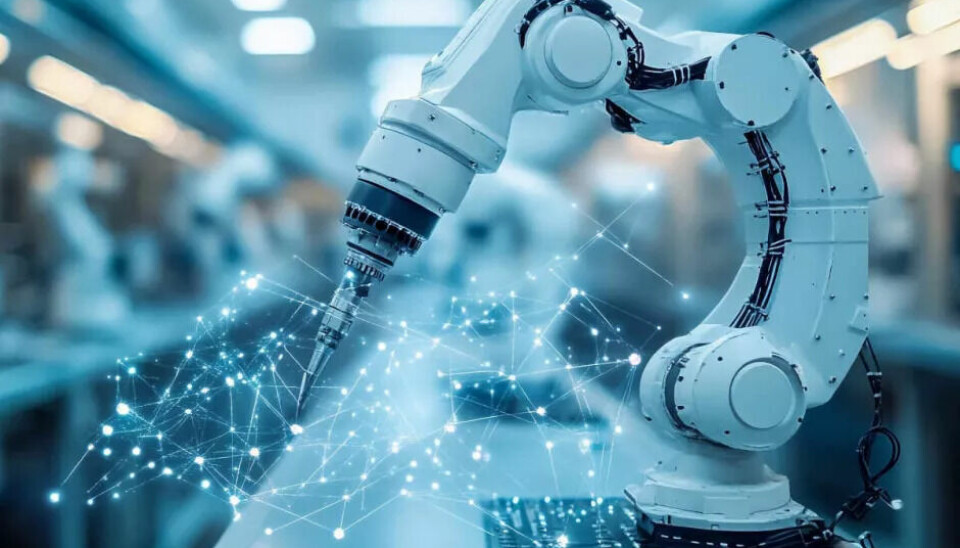Mechanical engineering summit
VDMA vice president on AI, robotics, and start-ups

VDMA vice president Alexander Jakschik discusses in an interview the collaboration with start-ups, trends around AI and robotics, and the start-up award at the mechanical engineering summit.
For the fourth time, the Start-up Award will take place at the Mechanical Engineering Summit. This year, it's about “AI in Robotics and Automation.” Here, young companies with new ideas meet an industry that is increasingly relying on external innovation dynamics, especially on future topics.
Alexander Jakschik will host the award ceremony on September 16 in Berlin, together with Claus Wilk (Editor-in-Chief of Produktion). Jakschik is a board member of the air filter manufacturer ULT AG, which has 200 employees, VDMA Vice President, and Chairman of the VDMA Regional Association East.

Mr. Jakschik, how important is it for new ideas to come into play through start-ups? How would you assess the development in the industry: Are companies increasingly collaborating with start-ups? And if so, in which areas does this happen most frequently?
Alexander Jakschik: From my perspective, ideas from outside are very important because a start-up usually sets out as a company to solve a problem - and that means progress. Start-ups are, by definition, faster and more willing to experiment than established companies, they have less administrative overhead, and they usually work with a small team very specifically on a customer issue.
We see that there is gradually more collaboration between established companies and start-ups, especially in future technology areas that are changing very dynamically - such as AI, digital business models, or sustainability technologies. Companies like to bring in external know-how. Nevertheless, there is still room for improvement. The VDMA supports this trend with the "Start-up Radar" - and of course, the Startup Award is an important platform.
How do you assess the experiences from the past years with the Start-up Award? How important is the inspiration for the industry, what feedback is being heard?
Jakschik: In order for start-ups and industry players to come together for an exchange, the "organized coincidence" must be created, so to speak. The award has proven itself for this in recent years. Summit participants see the innovation of tomorrow there, and thus the view expands to new challenges and solution approaches.
Many people from the industry have already told me: "I saw ideas at the award that I wouldn't have come across in my network." And I, as an entrepreneur, also appreciate this inspiration very much.
What do the start-ups that participate gain? Are there examples where collaboration with companies from the mechanical and plant engineering sector came about?
Jakschik: For start-ups, it is often difficult to meet established companies, learn more about their practical challenges, and get important feedback on their own offerings. At the mechanical engineering summit, there is also time for further exchange to better understand the needs of potential customers. From my perspective, I can say: We are working with two young companies that we met here.
Another good example is Ucaneo, a start-up that won the last award in 2023. They build large "air washing systems," a direct air capture system that filters CO2 from the air, modeled after the lung. It is then broken down into its basic components to reduce the CO2 content in the air.
The stored CO2 can, in turn, be used for synthetic fuels. It is also a good example of how mechanical engineering technology can contribute to solving problems. For the climate-tech startup, the award has brought high visibility.
This year it's about AI for robotics and automation. What are the most exciting trends here at the moment?
Jakschik: We already saw at the Hannover Messe that AI was the dominant theme and is developing a high level of dynamism. You could say: This new technology is now rapidly finding its fields of application. Both traditional companies and startups are working on solutions.
AI actively solves problems like the issue of skilled labor shortages, which will particularly concern us in Germany in the coming years. AI tools are capable of taking over many tasks, thereby creating space for existing skilled workers to focus on the essentials. Above all, they can take on tasks related to analyzing large amounts of data.
In combination with robotics, self-learning production processes can be built to increase productivity and efficiency, but also to respond more flexibly to changing production requirements. Here we want to make solutions visible with the award and contribute to inspiration.
GenAI massively simplifies how robotics is operated and programmed with natural language. Some manufacturers experience this as a disruption and invest in the use of large language models. How does the adaptation of GenAI affect the overall competitiveness in mechanical and plant engineering?
Jakschik: This is a topic that personally excites me: Basically, it's about the democratization of robotics and automation. Previously, specialized know-how had to be built up first to be able to operate these technologies. By using language models and voice control, the entry barriers are lowered: Companies now reach their goals much faster - not least, new business models and user groups can be tapped into. Classic topics such as commissioning and consulting are changing.
We see that AI is making extreme technological leaps. At the end of the year, the VDMA will release a new future study on humanoid robots, which will explore technological perspectives and industrial application scenarios. There will certainly be initial insights from this at the summit. Basically, it can be said: Those who do not use the AI tool will probably disappear from the market in the medium term. Those who use it well will also be successful in the long term - and perhaps even be above-average competitive.
In which areas is the award topic relevant for SMEs from your perspective?
Jakschik: When I look at the challenges we face in our region - and which are emerging nationwide - the first thing that stands out is that by 2035, more than 20 percent of the workforce will retire due to demographic reasons. That is significant. At the same time, competitive pressure from other countries, especially China, is increasing significantly.
With the previous tools and means, the necessary increase in effectiveness and cost reduction is not possible. This means that SMEs must increasingly rely on robotics, automation, and AI technology to compensate for the gaps. For example, in the future, a robot could assemble or test devices: tasks that are still performed by humans today.
At the mechanical engineering summit salon in May at SEW Eurodrive, there was a call from all sides for more speed. Have companies already recognized the potential? What contribution can start-ups make to bring AI into mechanical and plant engineering?
Jakschik: There is certainly still a gap between the tools that are already available and their use. We have a strong competitor in China breathing down our necks. It is important for German companies to put the tendency towards perfection into perspective. We must try to bring solutions to the market as quickly as possible that are "good enough" - and that we can perfect in the next step.
To keep up the pace, it is more important than ever to engage with these new technologies and initiatives like Manufacturing-X: to establish initial projects in one's own company, to "inoculate" the organization with them, so to speak, and to let it learn. Collaborating with start-ups on topics where there may not yet be much in-house expertise can contribute to more speed.
What does innovation technology mean for the industry as a whole and which application scenarios are particularly exciting to advance further automation?
Jakschik: AI can be the accelerator for the next level of automation - it will even be that. Until now, automation has automated a fixed process with relatively high effort in programming and deployment. With AI and generative language models, it is now possible to very quickly set up, for example, an automation line.
A major advantage is that self-learning processes can be established: the line can provide feedback for its optimization, configure itself, and take on tasks such as quality monitoring. This is a real accelerator.